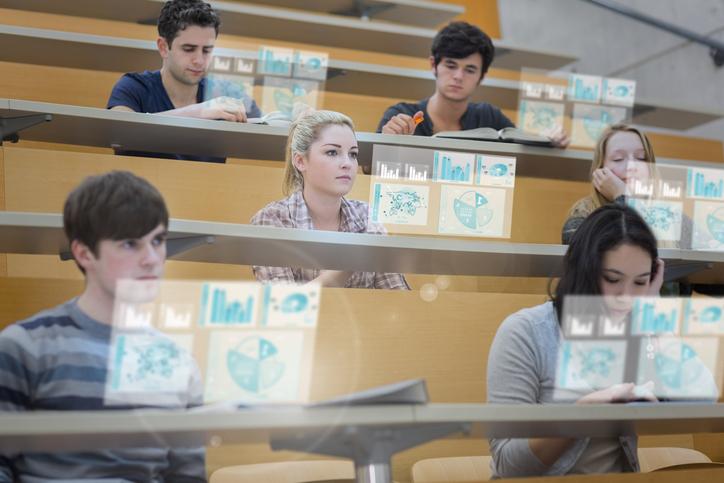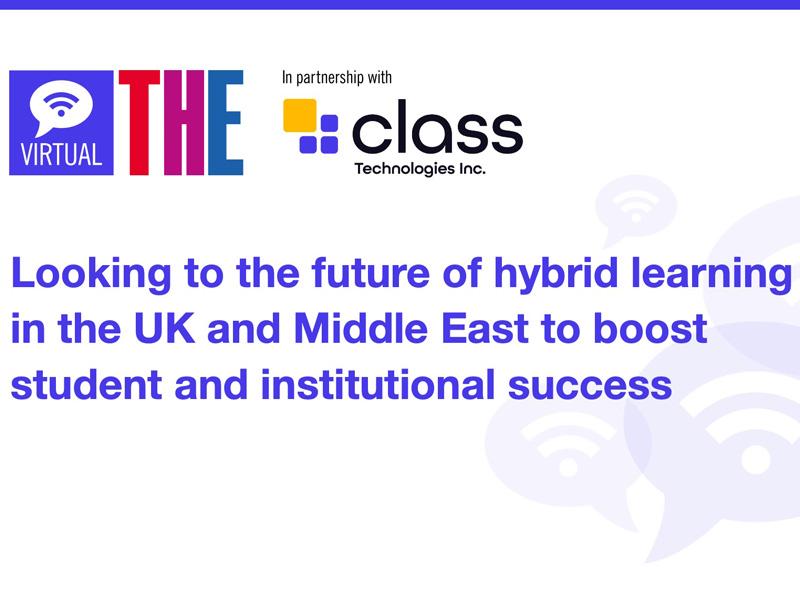What is the ideal balance between online and in-person learning? Adopting a hybrid model makes use of the technology at our fingertips while also benefitting from face-to-face interaction in the classroom. But it’s important to consider the advantages and disadvantages to each method because this will enable academics to deliver the most engaging educational experiences to their students.
Keep students engaged
While in-person learning facilitates non-verbal cues as well as more spontaneous interactions, shy or socially anxious students can struggle to participate in classroom discussions. In contrast, online platforms provide many opportunities for interaction, such as chat, polls and breakout rooms – allowing students to find their own comfort zone. However, without physical presence, students are prone to become disengaged. Some may even be multitasking during online sessions.
- Want to advance students’ self-learning? Look at your course design
- Seven steps to help students stay engaged online
- Eight ways to improve your digital well-being
It’s important to encourage active participation in both settings. Use engagement techniques such as small group discussions, Q&A sessions and problem-solving activities. Engage students in both in-person and online classes by using online tools such as polling or collaborative documents.
Think about class accessibility
With online classes offering maximum flexibility, students can attend classes and access course materials from anywhere. But technical issues – poor internet connections or out-of-date devices – can create barriers.
In-person learning offers a structured schedule, providing a sense of routine and stability. Yet, students with diverse schedules, responsibilities or health concerns may struggle to attend. There will also naturally be limitations on class sizes because of the capacity of lecture rooms, laboratories and workshops, especially for technical programmes such as engineering.
Offer a hybrid approach, catering for the diverse needs of the student body. Provide clear instructions for accessing course materials, in the right formats and within reasonable timeframes, especially for students with special learning needs.
Collaborate face-to-face and through a screen
Collaborating in-person helps students build relationships with their peers. Working on coursework as a group teaches them how to balance out each other’s strengths and weaknesses, enhancing learning outcomes for the group as a whole. However, group dynamics can be challenging to manage and some students may struggle to contribute equally.
Online collaboration tools, such as video conferencing or shared documents, allow students to work together remotely. But without in-person interaction, it can be difficult to establish rapport and navigate group dynamics. Even authenticating the actual contributions of group members can be tricky.
To combat this, provide clear guidelines and expectations for group work in both settings, including roles, responsibilities, assessment rubrics and timelines. Encourage the use of online tools to facilitate communication and collaboration among group members, even in in-person classes.
Personalise feedback
Online assessments can be more efficient than in-person ones. Some tools even provide automated feedback for individual students and groups. Yet the lack of personal interaction can inhibit students from fully understanding and internalising constructive criticism.
In-person learning benefits from immediate feedback and, in a one-to-one interaction with their educator, students can address concerns and gain insights into their performance.
Improve students’ engagement with the learning materials by implementing a combination of formative and summative assessments, in both in-person and online settings. This will also reduce the anxieties brought on by single-point high-stakes assessments.
Technology such as automated quizzes and peer review tools can streamline the assessment process, while still covering the intended learning outcomes and providing meaningful feedback.
Offer virtual office hours or online consultations to students who have faced similar challenges, both as individuals and groups. This will of course depend on the size of the class and staff-to-student ratios, but can be an efficient way of delivering personalised feedback.
Build a sense of community
It’s easy to foster a sense of belonging and connection between classmates and their educators when lessons are being held face-to-face. Yet some students can struggle to form relationships outside the classroom environment.
This is where online learning has the edge, as digital platforms can provide opportunities for connection beyond the classroom, through discussion forums, group chats and social media. But the lack of in-person interaction can result in feelings of isolation or disconnection.
Encourage relationship-building in both settings by incorporating icebreakers, team-building exercises, follow-up activities that make students connect beyond scheduled teaching hours and opportunities for informal conversation.
In the aftermath of the Covid-19 pandemic, educators must capitalise on the benefits of both in-person and online learning. Implement strategies to harness each method’s strengths to create engaging learning experiences for students. The most successful educators in the ever-changing landscape of higher education will be those who can embrace the best of both strategies, adapting and innovating in order to make education as enriching and inclusive as possible.
Ibham Veza is a lecturer at the mechanical engineering department at Universiti Teknologi Petronas and Akilu Yunusa-Kaltungo is head of education for the school of engineering at the University of Manchester.
If you would like advice and insight from academics and university staff delivered direct to your inbox each week, sign up for the Campus newsletter.




comment